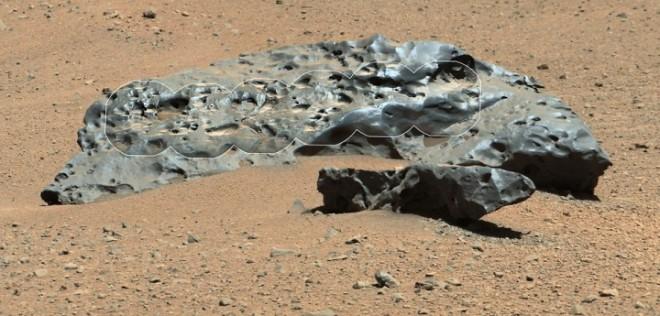
Nasa's Mars rover, Curiosity, has discovered its first meteorite on the planet's surface, and it is a mightily impressive one.
Called 'Lebanon' by scientists, the 7 foot (2 metres) wide meteorite is made entirely of iron. In front of it is another, smaller meteorite which has been given the catchy moniker 'Lebanon B'.
Seven feet might not strike you as particularly big for a meteor, particularly if your frame of reference is Hollywood movies like Armageddon and Deep Impact, but the discovery certainly has Nasa scientists buzzing.
Nasa spokesman Guy Webster described it as "huge" while on Twitter the rover's handlers enthusiastically wrote: "Heavy Metal! I found an iron meteorite on Mars."
Detailed photos like the one above were taken with Curiosity's high resolution camera. They show a series of strange crevices on meteorite's surface which appear like interstellar pockmarks.
"One possible explanation is that they resulted from preferential erosion along crystalline boundaries within the metal of the rock," reads an official Nasa statement. "Another possibility is that these cavities once contained olivine crystals, which can be found in a rare type of stony-iron meteorites called pallasites, thought to have been formed near the core-mantle boundary within an asteroid.
"Iron meteorites are not rare among meteorites found on Earth," continues the statement. "But they are less common than stony meteorites. On Mars, iron meteorites dominate the small number of meteorites that have been found. Part of the explanation could come from the resistance of iron meteorites to erosion processes on Mars."
Landing on Mars in August 2012, Curiosity's latest discovery took place on the rover's 640th Martian day on the surface. A day on Mars is marginally (37 minutes) longer than a day on Earth.













